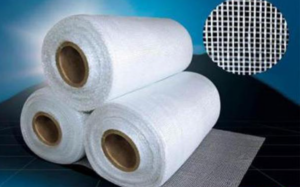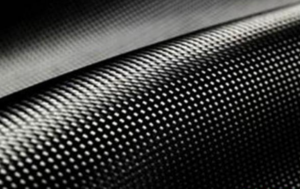It is a kind of inorganic nonmetallic material with excellent properties. Glass balls or waste glass as raw materials after high melting, drawing, winding, weaving, and other processes, the final formation of glass fiber, glass fiber diameter from a few microns to more than 20 meters between microns, equivalent to a hair 1/5 to 1/10 diameter, a bundle of fiber are composed of hundreds of monofilament.

Characteristics of glass fiber:
It is generally considered that glass is a brittle hard object and is not suitable for structural use. However, if it is drawn into silk, the strength will be greatly increased and has softness, so it can become an excellent structural material after changing shape with resin.
As the diameter of glass fiber decreases, its strength increases. These characteristics make the use of glass fiber far more extensive than other types of fiber. Glass fiber has the following characteristics:
High tensile strength; High elastic coefficient; High impact strength; Chemical resistance; Low water absorption; Good heat resistance; Processing of the product variety; Transparent colloid; The price is cheap.
Carbon fiber:
An inorganic fiber made of carbon. The carbon content of fiber is greater than 90%. It is generally divided into three categories: ordinary type, high strength type, and high model. Compared with glass fiber (GF), young’s modulus is more than 3 times. Compared with Kevlar fiber (KF-49), it not only has about two times Young’s modulus, but also is insoluble and does not expand in an organic solvent, acid, and alkali, and has outstanding corrosion resistance.
Carbon fiber is a fibrous carbon material. It is stronger than steel, less dense than aluminum, more resistant to corrosion than stainless steel, more resistant to high temperature than heat-resistant steel, as conductive as copper, electrical, thermal, and mechanical properties of the new material.

Carbon fiber can be processed into fabric, felt, mat, tape, paper and other materials. In addition to the traditional use of carbon fiber as insulation materials, generally not used alone, as reinforcement materials to add to the resin, metal, ceramic, concrete and other materials, forming composite materials. Carbon fiber reinforced composite materials can be used as aircraft structural materials, electromagnetic shielding electrolysis materials, artificial ligaments and other body substitute materials, as well as for the manufacture of rocket shells, motor ships, industrial robots, automotive spring and drive shaft, etc. Carbon fiber is widely used in civil, military, construction, chemical, industrial, aerospace and supercar fields.




























